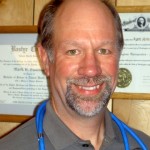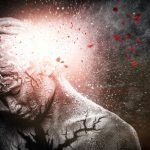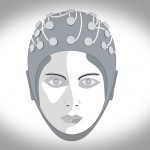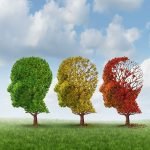NeuroCranial Restructuring
The Sphenoid Link to Pain, Health, and Healing
Mark Swanson, ND
Some critics have said that practicing the art of naturopathic medicine is no science. Physicians who practice it say that much of the real science of medicine extends beyond any boundary and that conventional medicine mostly falls short at treating the causes. Dr Bastyr said it most eloquently: it is the patient who does the healing, not the physician. This Expert Report is literally about getting to the core and treating the cause—naturally, via the unique therapeutic restructuring and alignment of the cranial sphenoid structure. Renowned NDs Dean Howell and daughter Selena Eon share their expertise as pioneering developer, practicing specialist, and trainer of practitioners in NeuroCranial Restructuring, or NCR. This is a fascinating interview about their powerful physical medicine system for pain, health, and healing.
What are your educational training and current position?
Dr Howell: I have a BA from the University of Washington [Seattle] in mathematics in 1978 and my naturopathic medical degree from Bastyr University [Seattle] in 1982. I work for NCR-01 [Bellevue, Washington], a nonprofit group that has me traveling extensively to treat patients and train physicians.
Dr Eon: I also attended Bastyr University and received my ND degree in 2007 and BS in whole foods nutrition in 2002. My private practice focuses on NCR therapy, nutrition, and pain management and is located in Bellevue, Washington. My father is Dr Dean Howell, the developer of NeuroCranial Restructuring.
What is NeuroCranial Restructuring?
Dr Howell: NCR is a blend of a unique kind of energetic deep muscle therapy, external cranial manipulation, precise proprioceptive (balance oriented) testing, and endonasal balloon treatment. It utilizes careful analysis of the body’s proprioception (patterns of balance) to determine the precise areas of the skull needing to be unlocked. This unlocking allows the connective tissues (including the meningeal system) to release their residual tensions and move the bony structures incrementally back towards the body’s original design.
How does this modality fit into the specialty of pain medicine?
Dr Howell: In traditional natural medicine, the emphases in healing are placed on detoxification of metals, chemicals, and toxins; hygienic living; and removal of infective organisms. Except for partial recovery from accidents and injuries, the physical medicine techniques like massage, physiotherapy, and manipulation are used for pain relief. NCR is a method of treating the cause, as well as giving patients relief.
What is a typical treatment period?
Dr Howell: An “NCR series” is 4 days of treatment in a row, performed monthly. We generally recommend 6 or 8 treatment series to overcome simple conditions like headaches or sinusitis. For traumatic brain injuries or other severe conditions, we may go beyond 20 treatment series.
Pain therapy is often a temporary fix in physical medicine. How is NCR different?
Dr Howell: With many physical medicine modalities, it’s often a short-term relief, and patients must come in on a regular schedule. There can be some long-term improvements, but they are generally local changes like a lessening of the intensity of headaches or neck pain. Thus, regular maintenance treatment is required to prevent “slippage” into painful alignment patterns. Unfortunately, physical medicine often fails to correct the problem. I began modifying treatment to improve stability after treatment, and then the changes lasted longer. Oftentimes, the treatments are essentially permanent and cumulative. This is the special NCR difference.
Is NCR considered short-term palliative therapy or long-term corrective therapy?
Dr Howell: With NCR, long-term changes are the normal response, and the eventual result is an optimization of nervous system functions. What I have found is that many conditions thought to be entirely biochemical, developmental, or infective in nature have a previously unknown correctable structural component. This means that conditions like OCD [obsessive-compulsive disorder], traumatic brain injury, PTSD [posttraumatic stress disorder], depression, migraines, learning disabilities, and scoliosis have a new approach in treatment. To me, natural healing involves hygienic living (pure food, water, air, exercise, etc); detoxification of metals, chemicals, and toxins; treatment of infective organisms; and optimization of structure. This is a paradigm shift in medicine.
Can you share some of the history leading up to NCR?
Dr Howell: NCR has a heritage less documented than many other physical medicine techniques. It began with osteopathic finger technique in the 1920s, which was improved to include the small endonasal balloons in the 1930s (then known as bilateral nasal specific technique), improved further by Dr J. Richard Stober, DC, ND, in the 1960s and 1970s, who taught me from 1980 to 1984. I developed the concepts of NCR in 1995, and the technique is being constantly modified and improved.
What are the structural and physiologic effects of NCR?
Dr Howell: The primary precept of NCR is to optimize nervous system and musculoskeletal functions by simplifying structure and improving structural stability. Like craniosacral, NCR is very concerned with the flow of cerebrospinal fluid. With NCR, however, to change the skull, the major focus is movement of the sphenoid bone, which is poorly accomplished with the hands alone. The sphenoid bone has been described as the “keystone” of the skull. Anatomically, the sphenoid bone can be characterized as the center of the skull. It represents the crossroads where various factors, which contribute—each in its own way—to the craniofacial complex, are combined. The result of all of this is to gradually optimize the structure and posture and, equally important, optimize central nervous system function.
How does NCR actually move or manipulate the sphenoid bone?
Dr Howell: To move the sphenoid, we can use the hands and endonasal balloons. The manipulations are capable of making large movements of the sphenoid, but without improved structural stability, then the body reverts to where it was prior to treatment. So, the placement and brief inflation of endonasal balloons are the most effective technique, as long as the pattern of stability is improved. The old “shotgun” therapy of bilateral nasal specifics (BNS) is not as dependable for these results, and many more balloon insertions are used each session. At this time, I have found that the sphenoid and related cranial bones can require up to 15 lb of force to release the inflexible cranial joints. The special requirement of the sphenoid release requires great precision in order to maintain proprioceptive and gravitational stability for the body. Treatments will not last if the body’s stability is worsened.
Do patients with chronic daily headaches or migraines get long-term relief?
Dr Eon: Yes. Primary headaches and migraine respond very well to NCR. This is particularly important because headaches and migraines are notoriously difficult to successfully treat. Many individuals with these conditions suffer for decades, never finding an effective treatment. With NCR, we have a very high rate of treatment success.
What migraine success are NCR practitioners reporting in the field? Any outcome examples?
Dr Eon: An unpublished NCR Research Institute study by a DO NCR practitioner found that 75% of her migraine patients experienced a 92% reduction in frequency and intensity of symptoms and that approximately half of the nonhormonal migraine patients experienced a complete resolution of symptoms after 2 NCR series separated by 3 months and then followed up 6 months later. This is an incredible response that we have also found to be true in our practices. This particular physician attempted to publish the study in a conventional medical journal and was turned down for publication, being told that “nothing works this well for headaches, or we would already know about it.” This statement proves how little these reviewers know about the treatment of headaches and migraines and the shortcomings of conventional therapies.
What other medical conditions does NCR treat?
Dr Howell: There are many other conditions treated with the powerful tools of NeuroCranial Restructuring. All of the following conditions can be the result of poor structure. So, with NCR we treat:
- Anxiety, nervousness, OCD (obsessive-compulsive disorder)
- Attention-deficit disorder, dyslexia, hyperactivity, and other learning disabilities
- Autism
- Cerebral palsy
- Concussion and traumatic brain injuries
- Depression
- Down’s syndrome
- Dystonia, Tourette’s syndrome, tics, torticollis
- Ear infections and deafness
- Glaucoma, double vision, and other vision problems
- Headaches, head pressure, migraines
- Insomnia
- Low energy, fibromyalgia, chronic fatigue
- Muscle spasms, neck and shoulder pain
- Orthodontic stress and bruxism
- Osteoporosis of the weight-bearing skeleton
- Plagiocephaly, microcephaly, and oddly shaped heads
- Phobias
- Poor concentration and focus
- Posttraumatic stress disorder
- Relationship difficulties
- Sciatica, kyphosis (hunchback), lordosis (swayback), scoliosis (spiral spine), military spine, and other back problems
- Seizures
- Sinusitis, sleep apnea, snoring, other breathing and sinus disorders
- Strokes
- Tinnitus
- TMD [temporomandibular dysfunction], TMJ [temporomandibular joint] (mouth, head, and jaw pains)
- Vertigo and other balance problems
- Whiplash syndrome
- Wrinkles (NCR often replaces a face-lift)
Do the results extend beyond resolution of the initial complaints?
Dr Eon: Many people seek NCR treatment because of a specific complaint like headaches, sleep apnea, or back pain. But NCR cannot be focused towards a specific complaint but is instead a customized and generalized treatment that corrects the causes of many symptoms. People report that they feel more energetic, happy, athletic, clearheaded, smart, creative, and (of course) beautiful. After undergoing NCR, people have better nasal breathing, smoother action of the TMJ, better posture, improved vision, better balance, decreased muscle tension, decreased emotional tension, and less pain.
Explain NCR’s cranial biomechanics response.
Dr Howell: The bones, connective tissues, muscles, and nerves work together to maintain the skull’s alignment patterns. They are integrated and interlocking. When you arbitrarily move a bone or connective tissue, the structure normally absorbs this movement and reverts to its previous pattern. This is to maintain stability of the overall structure. With NCR analysis, we determine where we can move bones and connective tissue and improve the patterns of symmetry and stability, which is then retained because of the improved stability. This improved symmetry creates superior mechanical functioning of the eyes, nose, breathing passages, the sinuses, TMJs, dental occlusion, and the hydraulic functioning of the brain. It is only with improved mechanical functioning of the skull that the brain can experience full cerebrospinal fluid flow. Only then can the brain function at its full capacity. Essentially, none of us can function at 100% of our designed capacity because none of us have optimized our skeletal structures.
How does the skull become restrictive to the normal CSF [cerebrospinal fluid] flow?
Dr Howell: The skull’s joints begin to lock or jam at birth as it is squeezed through the birth canal. Its various bones become compressed and jammed at the sutures, and the meninges are twisted and distorted. If you look at any hydraulic fluid texts, you will see that the hydraulic fluids flow patterns are dictated by the shape of the vessel. The brain is developmentally formed in a particular shape that is probably made to fit perfectly in the perfect skull. But the skull has been traumatized by birth, accidents, beatings, dentistry, and more. Optimal brain function is impossible in this compressed environment. Physical, biochemical, and emotional traumas in any part of the body create a snowball effect, constricting the skull when the meninges tighten, then as the skull bones are pulled closer together compressing the skull, which often makes the meninges tighten further, etc.
What is NCR’s relationship to pain management?
Dr Eon: As structure is optimized and the body returned to a proprioceptively stable position, then we find that painful symptoms tend to disappear. A big question remains in physical medicine, and I see it infrequently addressed in research: Can a person’s structure, posture, biomechanics, and physical shape be the cause of musculoskeletal pain and perhaps other conditions? It seems obvious to me that they are related, so I am puzzled by many practitioners’ approach to treating these conditions with medications, supplements, and herbs. It is fine to use these substances for treating symptoms, but they do not treat the cause. The substance-based approach for treating musculoskeletal pain should be for symptoms only, while treating the cause of the problem. Since many of our patients are affected by headaches or other forms of musculoskeletal pain that are structural in nature, for us to ignore the physical cause, while treating pain symptoms, is doing these patients a disservice. We must use our understanding of the laws of physics, while not forgetting to remain open to learning new information.
How do the NCR CNS [central nervous system] effects compare to spinal alignment?
Dr Eon: The body is a weight-bearing proprioceptively active system. Long-term postural stresses have been associated with the spinal ligament hypertrophy and ossification. Altered alignment of the spine, abnormal rotation, and translation of human posture are known to increase the rate of bone formation and can lead to osteophyte formation, central canal stenosis, and disk degeneration. The same phenomenon of tissue loading leading to degenerative change is likely applicable to the central nervous system. Understanding the effects of neurovascular stresses and strains that occur during central canal changes due to long-term postural stresses is vital. The CNS requires large amounts of energy, oxygen, and nutrients for optimal function, even under resting conditions.
How do the CNS fluids and spinal mechanics function influence each other?
Dr Eon: The CNS and the fluids contained within the cranium and spine act as a hydraulic system. The CNS is supplied via intrinsic vasculature and by diffusion from the cerebrospinal fluid (CFS) system. Spinal movements act to pump a new supply of oxygen, and nutrient-enriched CSF is brought in around the cellular components, and metabolic waste products are carried away to be recycled or discarded. This is a normal mechanical event in the pons-cord tract that occurs with pulsations of the rich vasculature supplying the CNS and, to a lesser degree, with respiration and healthy movements of the spine. When abnormal posture is maintained, mechanical pumping action of the cord is impaired, sometimes severely.
How would a painful, stiff, degenerative lumbar spine and surrounding musculature affect the CSF flow?
Dr Eon: Research from the 1970s and 80s indicates neural axoplasm has thixotropic properties, which indicates that both lack of motion and increased constant strain increase the viscosity of fluid in neural tissues and impairing transport mechanisms further. Increased tension in neural tissues caused by abnormal body structure, in turn causing impaired hydraulic CNS function, might be a primary mechanism leading to neurologic dysfunction and pain. Compounding this issue, patients do not have just one postural abnormality; most have a combination of postural abnormalities.
What are the safety and contraindications of NCR?
Dr Eon: NCR is a very safe therapy, with a history of very few complications. Millions of individual treatments have been performed by NCR practitioners without injury in babies as young as 1 day old to elders in their 90s. The negative side effects of NCR are mostly mild and short term. Typical reactions that may occur after treatment include light-headedness, headache, runny and stuffy nose, fever, nosebleed, tearfulness, and flashbacks of past events. Sometimes, there is a recurrence of pain symptoms. Even though this is unpleasant, this is not a bad sign for the body. It is just a movement of the skeleton that is parallel to a position that the body had in the past. With continued treatment, these situations have always reversed.
There is a potential for structural fragility for 3 or 4 weeks following treatment. During this time, we advise patients to avoid jarring activities, dental treatment and oral hygiene treatments, osseous manipulation, high-stress situations, or extreme physical fatigue, which could increase the risk for accidents. We also advise avoiding any contact sports for 8 weeks after an NCR treatment.
NCR is not recommended for acute nasal, facial, and cranial fractures and may be contraindicated in individuals with severe facial osteoporosis because of the risk of fractures. Individuals with serious bleeding disorders and tendencies who are unable to decrease their blood-thinning medication doses briefly before and after treatment may choose to avoid NCR treatment because of the small risk of nosebleed after treatment.
Two serious adverse patients’ events have been reported elsewhere: in 2003, involving a nasal septum fracture,1 and the other an asphyxiation death of a child2 in 1985. What exactly happened in each?
Dr Eon: The physician who performed the NCR resulting in the nasal septum fractures in a 51-year-old women in 1999 (reported in 2003)1 did not follow the NCR protocols correctly. Incorrect NCR body positioning techniques were used, leading to significantly more inflation pressure than would normally be used, resulting in a nasal fracture. In a proper NCR treatment, only the force and position are used to gently mobilize the cranial sutures and no more. In much of medicine, more is not better, and it was definitely so in this case. In the case of the child’s death in 1980 (reported in 1985),2 a Canadian naturopath used the outdated bilateral nasal specific technique (BNS) that we do not recommend. The finger cot (balloon) came off the inflation device and lodged in the child’s throat. NCR does not use the same unsafe equipment used in BNS in this particular case specifically to avoid a repetition of this unfortunate incident.
How do NDs become trained in NCR?
Dr Howell: A doctor whose licensure permits (or does not exclude) endonasal therapy techniques could be accepted into the training program for NCR. Classes are limited to 12 doctors for an intense 8-day course. The course includes 4 treatments from myself, a set of before-and-after treatment photos of each participant, enough equipment to begin practicing NCR, observation of me performing 24 to 48 treatments, observation of other doctors performing treatments on 3 patients each for 4 days, personally treating 3 patients as the primary doctor for 4 days, and serving as the assistant for 3 more patients for 4 days, all while I supervise. Complete practitioner information can be found at www.drdeanhowell.com.
Dr Swanson’s comments: Thank you both. Your pioneering work in NCR will certainly be noted as one of the most intriguing naturopathic medical treatment specialties ever among the spectrum of physical medicine. It would be an excellent area for collaborative study and research at naturopathic medical schools to further understand and document its science, efficacy, and outcomes. Now, if it can cure a drippy nose…
Mark Swanson, ND, writes “The Expert Report” column, which is featured in NDNR. Dr. Swanson has over 25 years experience as chief medical advisor, research and technical consultant, and products formulations expert to leading practitioner brand supplement manufacturers. He is a former associate editor for the American Journal of Naturopathic Medicine, national product director, and published researcher. He is a pioneer graduate of Bastyr University, 1984. Dr. Swanson has his private practice specializing in Preventics Care and Functional Medicine, in Sequim, Washington. Contact: [email protected]
References
1. Davis GE, Murphy MP, Yueh B, Weymuller EA Jr. A complication from neurocranial restructuring: nasal septum fracture. Arch Otolaryngol Head Neck Surg. 2003;129(4):472-474.
2. Lowell J. Bilateral nasal specific. NCAHF Newsletter. 1985;8(1):2. http://www.ncahf.org/. Accessed May 28, 2011.
Related Bibliography:
Harrison DE, Cailliet R, Harrison DD, Troyanovich SJ, Harrison SO. A review of biomechanics of the central nervous system, part I: spinal canal deformations resulting from changes in posture. J Manipulative Physiol Ther. 1999;22(4):227-234.
Harrison DE, Cailliet R, Harrison DD, Troyanovich SJ, Harrison SO. A review of biomechanics of the central nervous system, part II: spinal cord strains from postural loads. J Manipulative Physiol Ther. 1999;22(5):322-332.
Harrison DE, Cailliet R, Harrison DD, Troyanovich SJ, Harrison SO. A review of biomechanics of the central nervous system, part III: spinal cord stresses from postural loads and their neurologic effects. J Manipulative Physiol Ther. 1999;22(6):399-410.
Goadsby PJ. New daily persistent headache: a syndrome not a discrete disorder. Headache. 2011;51(4):650-653.
Colombo B, Dalla Libera D, Comi G. Brain white matter lesions in migraine: what’s the meaning? Neurol Sci. 2011;32(suppl 1):S37-S40.
Brumagne S, Janssens L, Knapen S, Claeys K, Suuden-Johanson E. Eur Spine J. 2008;17(9):1177-1184.
Brumagne S, Janssens L, Janssens E, Goddyn L. Altered postural control in anticipation of postural instability in persons with recurrent low back pain. Gait Posture. 2008;28(4):657-662.
Mientjes MI, Frank JS. Balance in chronic low back pain patients compared to healthy people under various conditions in upright standing. Clin Biomech (Bristol, Avon). 1999;14(10):710-716.









